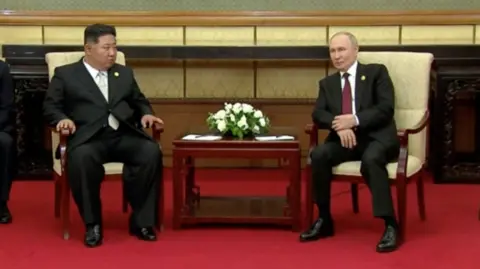In a continuing struggle over maritime boundaries, a tiny sandbar called Sandy Cay in the South China Sea has become a focal point of rising tensions between China and the Philippines. This confrontation saw both nations laying claim to the island by showcasing their respective flags. Recently, Chinese Coast Guard personnel landed on the disputed reef, claiming to exercise "sovereign jurisdiction," according to Chinese state media reports. Following their brief occupation, the Philippines responded by sending its own forces to the sandbar. The Chinese government decried this as an “illegal boarding,” asserting its “indisputable sovereignty” over the Spratly Islands, which include Sandy Cay among various territories.
This uptick in tensions emerges just as the United States and the Philippines commenced their annual military exercises, which China has criticized for undermining stability in the region. Given the U.S.'s commitment to defend the Philippines as a treaty ally, this situation adds another layer to the existing geopolitical complexities. China’s extensive territorial claims in the South China Sea have led to years of disputes, particularly in the Spratlys where it has fortified a military presence by establishing bases on reclaimed land adjacent to Subi Reef, not far from Thitu Island, which serves as a critical military outpost for the Philippines.
Analysts suggest China’s maneuvers to control Sandy Cay may be a strategic move to assert claims on nearby Subi Reef, which has natural features that become submerged during high tide. This ongoing territorial tussle underscores the fragile state of politics and military presence within the contested maritime region, highlighting the delicate balance of power in East Asia.
This uptick in tensions emerges just as the United States and the Philippines commenced their annual military exercises, which China has criticized for undermining stability in the region. Given the U.S.'s commitment to defend the Philippines as a treaty ally, this situation adds another layer to the existing geopolitical complexities. China’s extensive territorial claims in the South China Sea have led to years of disputes, particularly in the Spratlys where it has fortified a military presence by establishing bases on reclaimed land adjacent to Subi Reef, not far from Thitu Island, which serves as a critical military outpost for the Philippines.
Analysts suggest China’s maneuvers to control Sandy Cay may be a strategic move to assert claims on nearby Subi Reef, which has natural features that become submerged during high tide. This ongoing territorial tussle underscores the fragile state of politics and military presence within the contested maritime region, highlighting the delicate balance of power in East Asia.





















